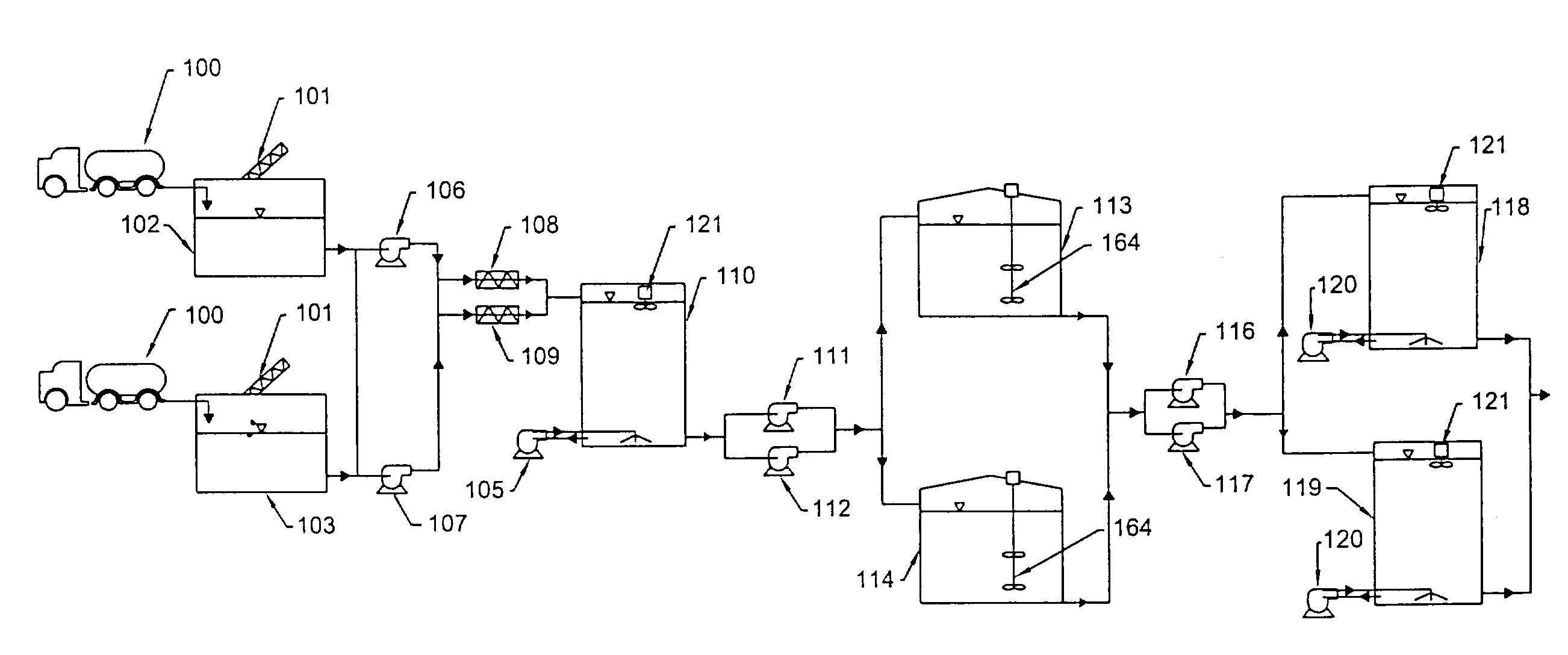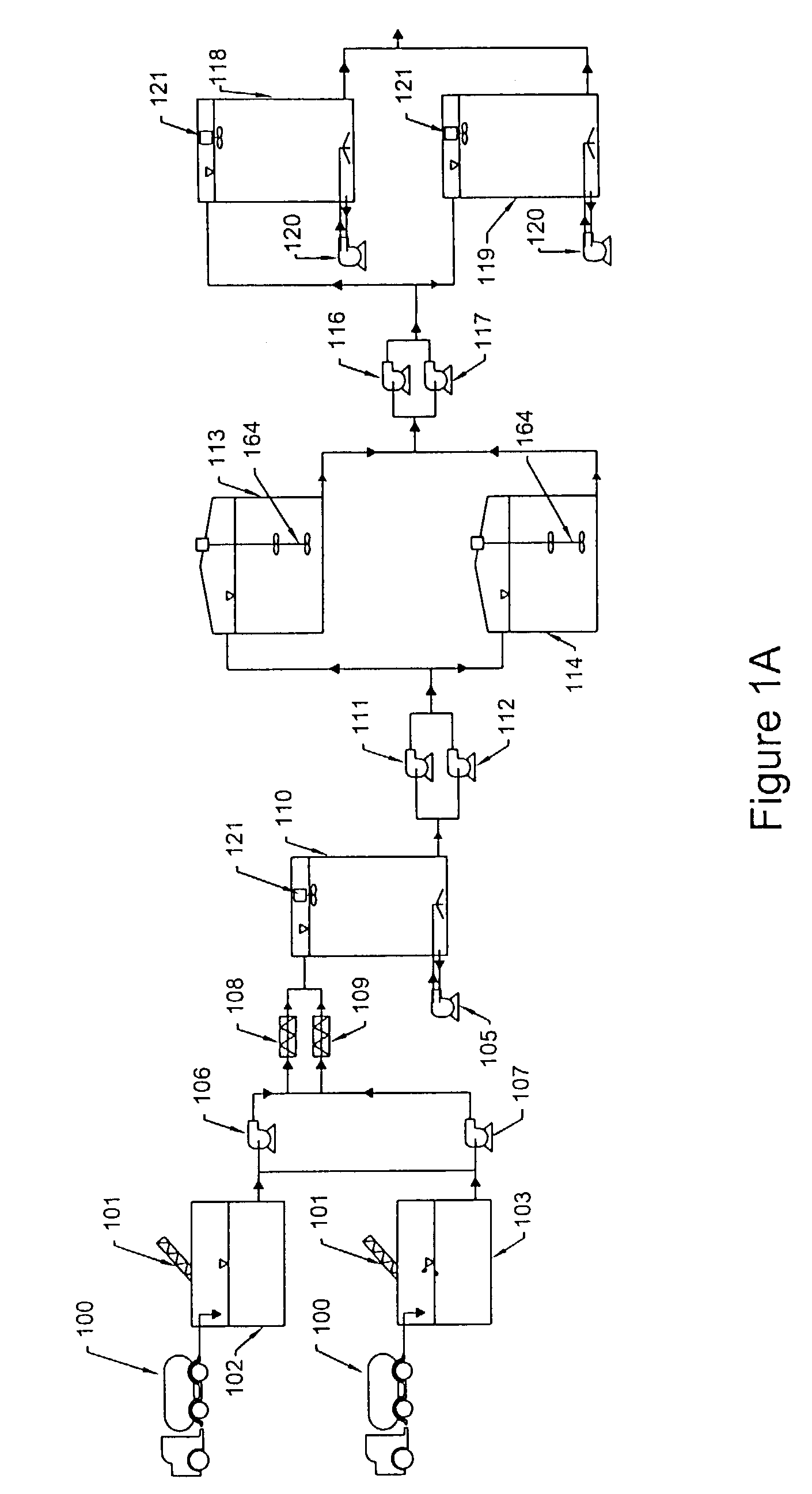Process for treating septage
- Summary
- Abstract
- Description
- Claims
- Application Information
AI Technical Summary
Benefits of technology
Problems solved by technology
Method used
Image
Examples
Embodiment Construction
[0025]The present invention particularly deals with the processing of grease trap waste that is collected by vacuum trucks from the grease traps of commercial establishments. Typically, raw grease trap waste includes mixed inorganic and organic solids such as bones, paper, plastics, metal utensils, garbage and other waste materials. The remaining components of the traps' waste are fats, oils, grease, surfactants and aqueous components. The trap waste mixture is not readily separable into components which can be readily disposed within municipal sewage systems or within landfill areas.
[0026]Turning now in detail to FIGS. 1A, 1B and 1C, an illustrative embodiment of the invention will be described. According to the inventive method, grease trap waste and other forms of septage are retrieved from their respective holding tanks by a septage pump truck 100. As shown in FIG. 1A, the collected waste is transferred into the treatment facility from the septage pump truck 100 into a first sep...
PUM
 Login to View More
Login to View More Abstract
Description
Claims
Application Information
 Login to View More
Login to View More - R&D
- Intellectual Property
- Life Sciences
- Materials
- Tech Scout
- Unparalleled Data Quality
- Higher Quality Content
- 60% Fewer Hallucinations
Browse by: Latest US Patents, China's latest patents, Technical Efficacy Thesaurus, Application Domain, Technology Topic, Popular Technical Reports.
© 2025 PatSnap. All rights reserved.Legal|Privacy policy|Modern Slavery Act Transparency Statement|Sitemap|About US| Contact US: help@patsnap.com



